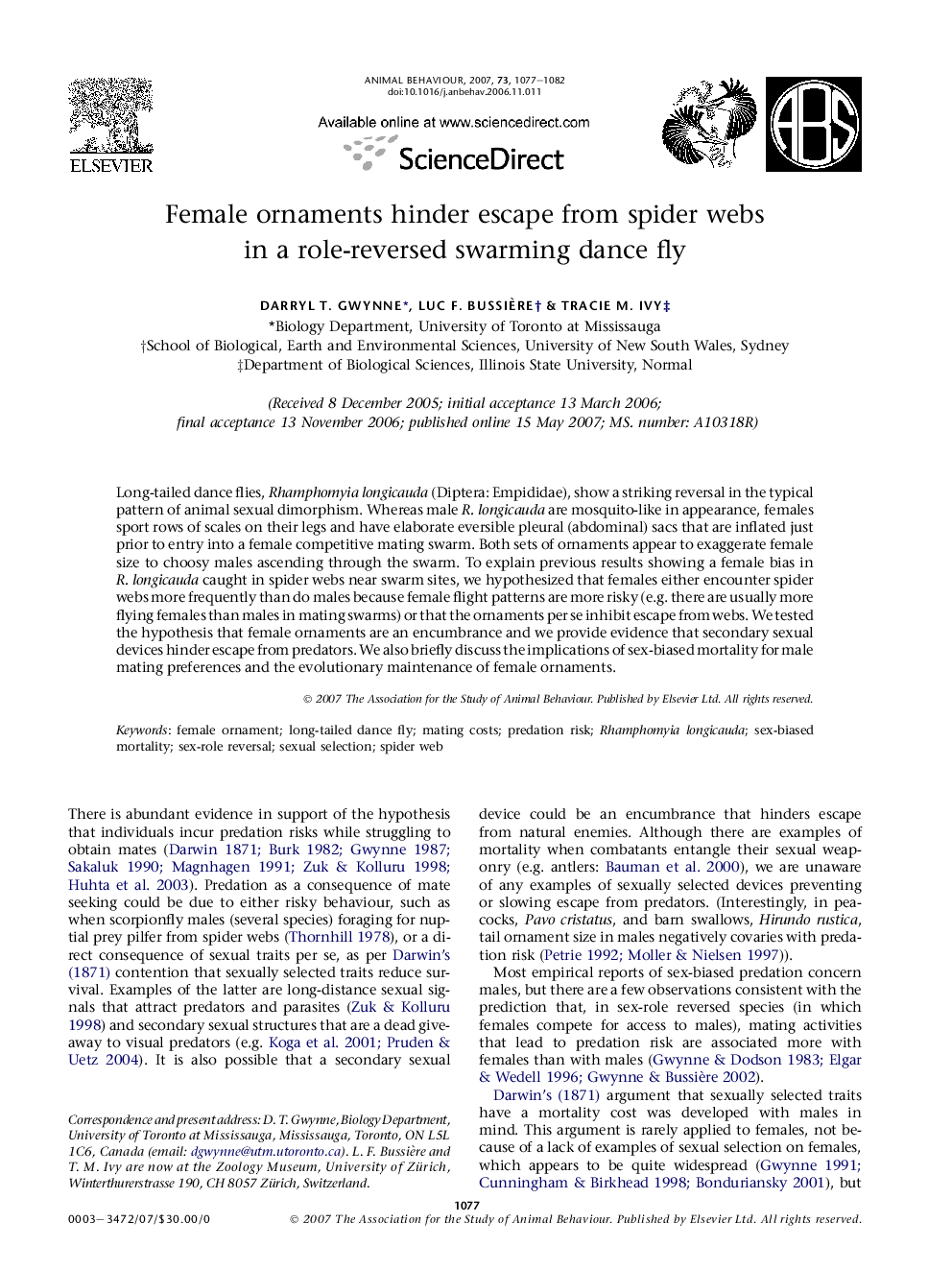| Article ID | Journal | Published Year | Pages | File Type |
|---|---|---|---|---|
| 2418203 | Animal Behaviour | 2007 | 6 Pages |
Long-tailed dance flies, Rhamphomyia longicauda (Diptera: Empididae), show a striking reversal in the typical pattern of animal sexual dimorphism. Whereas male R. longicauda are mosquito-like in appearance, females sport rows of scales on their legs and have elaborate eversible pleural (abdominal) sacs that are inflated just prior to entry into a female competitive mating swarm. Both sets of ornaments appear to exaggerate female size to choosy males ascending through the swarm. To explain previous results showing a female bias in R. longicauda caught in spider webs near swarm sites, we hypothesized that females either encounter spider webs more frequently than do males because female flight patterns are more risky (e.g. there are usually more flying females than males in mating swarms) or that the ornaments per se inhibit escape from webs. We tested the hypothesis that female ornaments are an encumbrance and we provide evidence that secondary sexual devices hinder escape from predators. We also briefly discuss the implications of sex-biased mortality for male mating preferences and the evolutionary maintenance of female ornaments.
